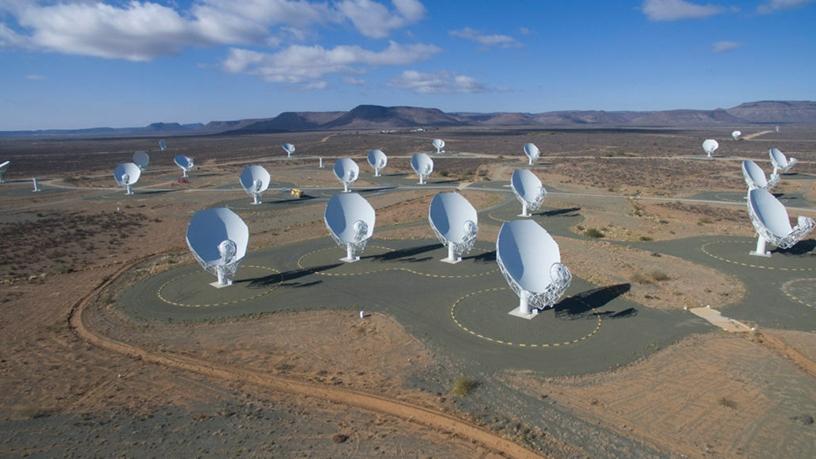
South Africa's MeerKAT radio telescope has observed a rare burst of activity from an exotic star, demonstrating outstanding capabilities as a new instrument for scientific exploration.
An article published last week in The Astrophysical Journal presents the study of a magnetar, a star that is one of the most magnetic objects known in the universe, which awoke in 2017 from a three-year slumber.
Radio observations that could only be made with MeerKAT, a telescope being built in the Northern Cape province of SA, triggered observations with NASA X-ray telescopes orbiting the Earth.
This first publication in the scientific literature of astronomical discoveries requiring the use of MeerKAT heralds its arrival into the stable of world-class research instruments, says SKA.
Radio pulses
Dr Fernando Camilo, chief scientist at the South African Radio Astronomy Observatory (SARAO, which includes the SKA South Africa project), says: "While monitoring the long-dormant magnetar with the CSIRO Parkes Radio Telescope in Australia, one of our colleagues noticed it was emitting bright radio pulses every four seconds."
A few days later, Parkes underwent a planned month-long maintenance shutdown. Although MeerKAT was still under construction, with no more than 16 of its eventual 64 radio dishes available, the commissioning team started regular monitoring of the star 30 000 light years from Earth.
According to Camilo, the MeerKAT observations proved critical "to make sense of the few X-ray photons we captured with NASA's orbiting telescopes - for the first time X-ray pulses have been detected from this star, every four seconds.
"Put together, the observations help us to develop a better picture of the behaviour of matter in unbelievably extreme physical conditions, completely unlike any that can be experienced on Earth."
The article, entitled Revival of the magnetar PSR J1622?4950: observations with MeerKAT, Parkes, XMM-Newton, Swift, Chandra and NuSTAR, has 208 authors.
A handful of these are astronomers specialising in the study of magnetars and related stars. The vast majority belong to the so-called MeerKAT Builders List: hundreds of engineers and scientists overwhelmingly from the SKA South Africa project and commercial enterprises in SA that over more than a decade have been developing and building MeerKAT, a project of the South African Department of Science and Technology, in which 75% of the overall construction budget has been spent in SA.
"MeerKAT is an enormously complex machine," says Thomas Abbott, MeerKAT programme manager. "In order to make the exquisitely sensitive images of the radio sky that will allow scientists to better understand how galaxies like the Milky Way have formed and evolved over the history of the universe, the 64 MeerKAT antennas generate data at enormous rates.
"The challenges involved in dealing with so much data require clever solutions to a variety of problems at the cutting-edge of technology."
Bright minds
According to Abbott, "we have a team of the brightest engineers and scientists in SA and the world working on the project, because the problems that we need to solve are extremely challenging, and attract the best".
Some of these people were in high school when the project started. "We have implemented a human capital development programme focused on producing the South African engineers and scientists with the skills required to design, build and use the telescope," says Kim de Boer, head of the SARAO Human Capital Development Programme.
Many of these young people are now employed at SARAO, at South African universities, and in the broader knowledge economy.
"The first scientific publication based on MeerKAT data is a wonderful milestone," says professor Roy Maartens, SKA SA research chair at the University of the Western Cape. "Although MeerKAT isn't yet complete, it's now clearly a functioning telescope. We've been training a new generation of researchers, and soon our young scientists will be using what promises to be a remarkable discovery machine."
Early in 2018, SARAO received the first Early Science MeerKAT observing proposals from South African researchers. Later in the year, already approved Large Survey Projects that will use two-thirds of the available observing time over five years will start their investigations with the full array of MeerKAT antennas.
These 64 dishes, each 13.5m in diameter, are distributed across a span of 8km in a remote area of the Northern Cape. The 64 MeerKAT antennas are standing in the Karoo. The official unveiling of the telescope is being planned for the second half of 2018.
Share